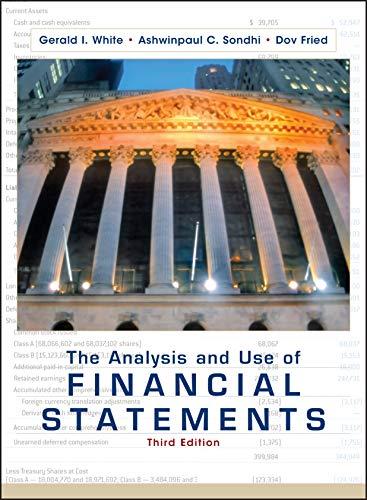Answered step by step
Verified Expert Solution
Question
1 Approved Answer
Dhahran Roads Hassan Malik, the financial manager of SADE, a Bahrain - based civil engineering company, reread the recently received fax. He was delighted that
Dhahran Roads
Hassan Malik, the financial manager of SADE, a Bahrainbased civil engineering company, reread the recently received fax. He was delighted that the nearly endless conversations with the Transportation Ministry of the municipality of Dhahran in eastern Saudi Arabia were finally coming to a close. SADE had been selected as the prime contractor for a million Saudi riyal SAR project that involved the reconstruction and upgrading of the highway network linking the several terminals of the Dhahran airport and connecting the entire complex with the city. The Dhahran Roads project was indicative of projects on which SADE had established its international reputation for being a leading construction contractor. The total cost of the project was estimated to be SAR million, so the SAR million value provided only a return, which was, unfortunately, below the hurdle rate required by SADE for projects of this nature. On the other hand, the slightly lessthandesired return seemed a small cost to pay to maintain a steady flow of new projects during these slow economic times. The fax requested that Malik respond to the project proposal within a week. The wording of the contract would then be finalized in the subsequent weeks and the contract signed by midJanuary
The Project The terms of the proposed contract contained several provisions:
At the signing of the contract, the ministry would advance to SADE of the contracts total value.
If work progressed on schedule, SADE could bill the Ministry as milestones were reached in accordance with the following schedule:
SAR million
SAR million
SAR million
SAR million
SAR million
The Ministry would pay of each bill received. Payment would, of course, be subject to a satisfactory inspection of the site by the Ministry. The deduction would be withheld for the recovery of the advance payment and the accumulation of a retention fund
Half of the retention would be reimbursed at the time of completion end of The second half would be repaid at the end of provided the roads did not show any flaws in their first year of use
During the past several months, the SADE engineering department had inspected the site, confirmed the surveys, and reviewed the drawings that had been provided by the Ministry. In the opinion of the vicepresident of engineering, the project presented no unusual challenges. It was similar to several SADE projects in other countries that were now nearly complete and that had moved ahead without difficulty. For SADE to proceed, equipment would have to be ordered immediately so that it would be available in the fourth quarter of when earth moving would commence. The cost of the equipment would be SAR million. Seventyfive percent of the cost would have to be paid upon placement of the order; the balance was due on delivery. At the end of the project, the equipment would have no salvage value. The engineering department estimated that the cost of completing the project not including the equipment would be SAR million. SAR million would be expended in for preliminary site work. The project would then proceed with estimated costs of SAR million, SAR million, SAR million, and SAR million for the subsequent years. Preliminary discussions with several banks indicated that SADE would be able to raise SAR million in loans to help finance the project. The loans would carry a annual interest above prime, above government securities and would have to be repaid in full at the end of The project would be managed by one of SADEs experienced project managers, Harold Smithers. Smithers had just completed a major waterworks project in East Africa and was noted for strong engineering skills and tight fiscal control. Although the contract would be denominated in SAR, the foreign exchange exposure would be minimal since the Bahraini dinar was pegged to the SAR. In addition, Saudi Arabian and Bahraini tax laws would not require SADE to pay taxes on the profits of this contract.
Using the content of the case study, answer the following questions, and show your calculations clearly.
a Prepare a cash flow analysis using the following template, and clearly show the hurdle rate & NPV
Start of End of End of End of End of End of End of Total
Total Receipts add rows to specific sources
Total Disbursements add rows to show specific costs
Net cash
b Calculate the IRR for the project points
Hint: Most companies include the cost of debt in their MARR hurdle rate recall the discussion around WACC weighted average cost of capital and its link to MARR hurdle rate; you can assume that is also true for this case
c What would be your recommendation to Malik? Should he say yes or no to the
opportunity? If yes, what fa
Step by Step Solution
There are 3 Steps involved in it
Step: 1

Get Instant Access to Expert-Tailored Solutions
See step-by-step solutions with expert insights and AI powered tools for academic success
Step: 2

Step: 3

Ace Your Homework with AI
Get the answers you need in no time with our AI-driven, step-by-step assistance
Get Started


